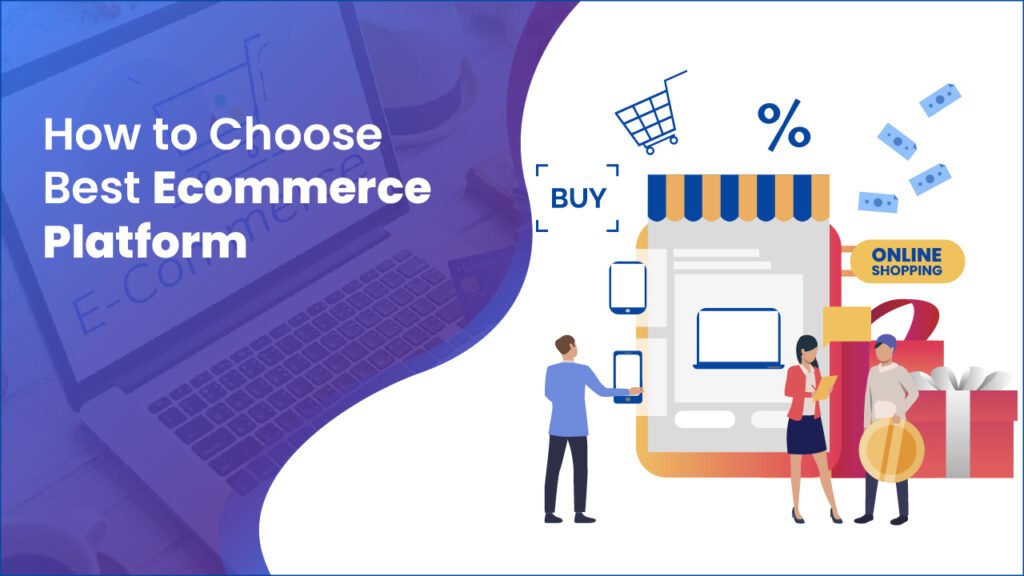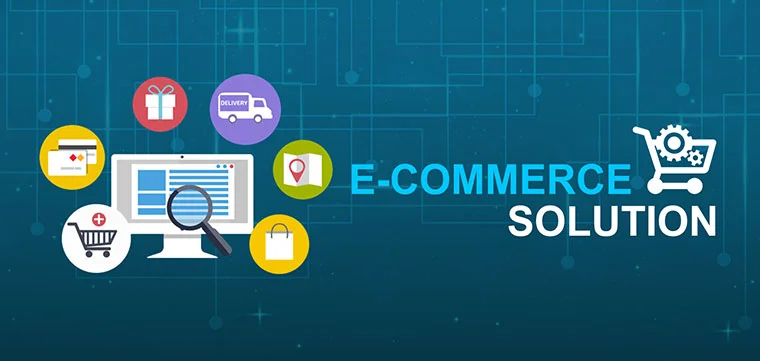Introduction
The rise of e-commerce has transformed the way businesses sell products and services. Whether you’re a startup or an established retailer, choosing the right e-commerce solution is essential for growth, efficiency, and customer satisfaction. In this guide, we will explore the top e-commerce solutions available and how they can help scale your online business.
What Are E-Commerce Solutions?

E-commerce solutions refer to software platforms and tools that enable businesses to sell products and services online. These solutions include website builders, payment gateways, shopping cart software, and inventory management systems, helping businesses streamline operations and enhance the shopping experience for customers.
Benefits of Using E-Commerce Solutions
- Scalability: Expand your business as your customer base grows.
- Enhanced User Experience: Improve website navigation and checkout processes.
- Secure Transactions: Ensure safe and reliable payment processing.
- Automation: Save time by automating inventory management and order fulfillment.
- Marketing Tools: Access SEO, social media integration, and email marketing features.
Top E-Commerce Solutions for Your Business

1. Shopify
- Best for: Small to medium-sized businesses
- Features:
- User-friendly drag-and-drop website builder
- Multiple payment gateway integrations
- Built-in SEO and marketing tools
- Secure checkout process
- Extensive app store for customization
2. WooCommerce
- Best for: WordPress users and businesses looking for flexibility
- Features:
- Free and open-source plugin for WordPress
- Highly customizable with themes and plugins
- Supports multiple payment gateways
- SEO-friendly structure
- Scalability for small to large businesses
3. BigCommerce
- Best for: Large-scale businesses
- Features:
- Advanced SEO capabilities
- No transaction fees
- Multi-channel selling (Amazon, eBay, Facebook, Instagram)
- Built-in analytics and reporting tools
- Customizable checkout experience
4. Magento (Adobe Commerce)
- Best for: Large enterprises and businesses needing advanced customization
- Features:
- Open-source and highly customizable
- Powerful inventory and order management tools
- Mobile-friendly and SEO-optimized
- AI-powered personalization and analytics
- Supports multiple languages and currencies
5. Wix eCommerce
- Best for: Small businesses and beginners
- Features:
- Easy-to-use website builder with customizable templates
- Secure payment processing
- Integrated email marketing tools
- Affordable pricing plans
- No coding skills required
6. Squarespace Commerce
- Best for: Creative businesses and entrepreneurs
- Features:
- Beautiful, high-quality website templates
- Built-in marketing tools
- Seamless inventory and order management
- Integration with social media platforms
- Secure and reliable hosting
7. OpenCart
- Best for: Businesses looking for a free, open-source solution
- Features:
- Free platform with no monthly fees
- Customizable templates and extensions
- Multi-store management support
- SEO and marketing tools
- Large community support
8. PrestaShop
- Best for: Small to medium-sized businesses wanting customization
- Features:
- Free, open-source platform with add-on modules
- SEO-friendly structure
- Multiple payment gateway integrations
- Multilingual and multi-currency support
- Customizable store themes
9. Volusion
- Best for: Businesses looking for built-in analytics and reporting
- Features:
- Drag-and-drop website builder
- Payment and inventory management tools
- Real-time analytics and reports
- Subscription-based pricing
- Secure and scalable hosting
10. Ecwid
- Best for: Businesses looking to add e-commerce functionality to existing websites
- Features:
- Integrates with WordPress, Wix, Weebly, and more
- Mobile-friendly and responsive design
- Supports multiple languages and currencies
- Affordable and flexible pricing
- Built-in social media selling tools
How to Choose the Right E-Commerce Solution

1. Identify Your Business Needs
- Consider your budget, product type, and customer base.
- Determine if you need a simple platform or advanced customization options.
2. Evaluate Features and Functionality
- Look for SEO optimization, payment options, and integrations.
- Check for scalability to accommodate business growth.
3. Assess User-Friendliness
- Choose a platform with an intuitive interface.
- Consider ease of website customization and order management.
4. Compare Pricing and Transaction Fees
- Review monthly subscription costs and transaction fees.
- Look for free trials to test platforms before committing.
5. Consider Customer Support and Security
- Ensure 24/7 customer support is available.
- Look for platforms with SSL security and fraud protection.
Also Read : How Can You Secure Online Business Funding For Your Startup?
Conclusion
Choosing the right e-commerce solution is crucial for the success of your online business. Whether you are a startup or a large enterprise, selecting a platform that meets your needs in terms of functionality, customization, and scalability will set you up for long-term growth. Investing in the right tools will enhance customer experience, streamline operations, and maximize revenue.
FAQs
1. What is the best e-commerce platform for beginners?
Shopify and Wix eCommerce are great options for beginners due to their user-friendly interfaces and affordable pricing plans.
2. Which e-commerce solution is best for large businesses?
BigCommerce and Magento are ideal for large businesses that require advanced customization, scalability, and multi-channel selling.
3. Are there free e-commerce platforms?
Yes, WooCommerce, OpenCart, and PrestaShop offer free versions, but you may need to pay for hosting, themes, and extensions.
4. Can I sell on social media with e-commerce solutions?
Yes, platforms like Shopify, BigCommerce, and Ecwid allow direct integration with Facebook, Instagram, and other social media channels.
5. How do I choose the best payment gateway for my e-commerce store?
Consider factors like transaction fees, global acceptance, security, and ease of integration with your e-commerce platform.
